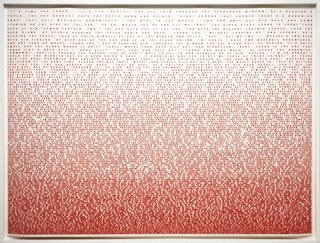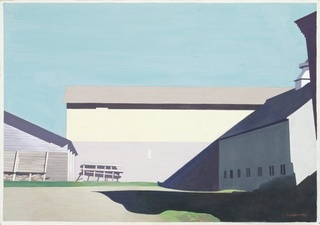Today was a big day for the 21st century museum, in case you didn’t notice. The Walter Art Center in Minneapolis opened an exhibit called 50/50: Audience and Experts Curate the Collection.
 It
It might be the first true is one of the first true crowdsourced exhibits at a U.S. museum. at least neither I nor other experts could think of any previous such shows. Other museums have asked the public to upload pictures or make other art for shows. But for 50/50, the Walker dropped the once-sacred professional boundary between curators and the public, and asked the public to vote for the works they would like to see in an exhibition.
UPDATE: Please see comments below — the Brooklyn Museum mounted a crowdsourced exhibit two years ago.
The Walker specifically chose about 200 works on paper from its permanent collection — works that are not often on view — from which the public could choose.
They had six weeks last summer to vote, either in person or online. In all, 137,844 votes were cast. The public chose only 50% of the show, though — the rest of the works were selected by Darsie Alexander, the Walker’s chief curator. She said that the rankings were transparent throughout so that everyone could see which works were “popular.” “Seeing and knowing the results was an important premise of this entire effort, both for the ‘public’ side and ‘mine,’ ” Alexander says.
 The choices are arrayed on opposite walls at the Walker, hung salon-style (though not too far up the wall; they have to be seen). The public’s choices have generally been hung in order of the number of votes they received; Alexander hung her side a bit more thematically/traditionally, with an eye on identifying key works in the collection and works by artists the Walker has collected in depth. Among them are works by Kiki Smith, Jasper Johns, Ed Ruscha and Kara Walker.
The choices are arrayed on opposite walls at the Walker, hung salon-style (though not too far up the wall; they have to be seen). The public’s choices have generally been hung in order of the number of votes they received; Alexander hung her side a bit more thematically/traditionally, with an eye on identifying key works in the collection and works by artists the Walker has collected in depth. Among them are works by Kiki Smith, Jasper Johns, Ed Ruscha and Kara Walker.
Still, the public provided some surprises — Walker experts expected voters to lean toward figurative works and narrative works, and they did, except for the most popular work of all: Break Point by Fiona Banner (above, left).
The public’s other top selections, in order, were Edgar Arceneaux’s House Turned Upside Down; Chuck Close’s Self-Portrait; Frank Big Bear’s Chemical Man in Toxic World and Charles Sheeler’s Buildings at
Some artists appear on both sides, of course, including Smith, Sigmar Polke and Robert Gober.
The Walker says it decided to experiment with crowdsourced curation in an effort to engage its audience more deeply. “Our culture now is more about higher participation, more user-driven content,” Alexander told me, for a short article in the December Art Newspaper.
I’m keeping an open mind about experiments like this: I like some aspects of it, such as comparing the two results in a face-off. The Walker has a more engaged, perhaps more sophisticated constituency than many other museums, too, and that makes the experiment more acceptable.
Once in a while, efforts like this could be ok; but I would hate to see the public come to expect a voice in curatorial matters.
Photo Credits: Courtesy of the Walker Art Center
